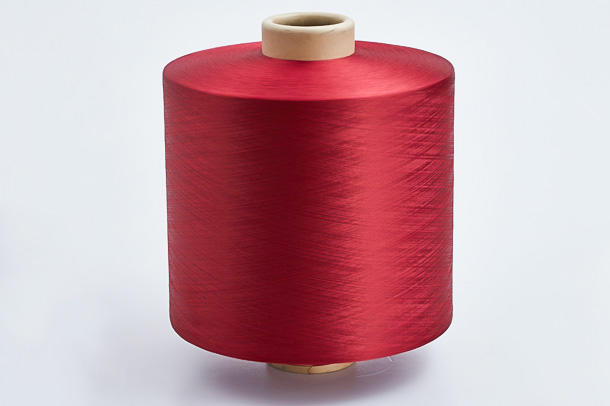Abstract:The world of carpets and rugs is rich with texture, color, and design, but at the heart of every piece lies its yarn. Un...
The world of carpets and rugs is rich with texture, color, and design, but at the heart of every piece lies its yarn. Understanding the different types of yarns and their applications is crucial whether you're a manufacturer, a DIY enthusiast, or simply a consumer looking to make an informed purchase. Choosing the right yarn is paramount, as it directly impacts a rug's durability, appearance, and overall feel.

While often used interchangeably, there's a subtle difference between carpet yarn and rug yarn, primarily in their common applications and characteristics. Carpet yarn generally refers to the yarn used in machine-made carpets, often designed for wall-to-wall installations or large area rugs. These yarns prioritize durability, stain resistance, and often have a more uniform appearance. Rug yarn, on the other hand, frequently encompasses yarns used for individual rugs, including both machine-made and handmade rug yarn. These yarns might offer a wider range of textures, colors, and fiber compositions, catering to diverse aesthetic and functional needs.
Carpet yarns are typically found in high-traffic commercial settings and residential installations, emphasizing longevity and ease of maintenance. Rug yarns, especially those for handmade rug yarn projects, are often chosen for their aesthetic appeal, softness, and unique tactile qualities, making them ideal for accent rugs, throws, or decorative pieces.
Types of Yarn Used in Rugs and Carpets
The vast array of yarns available allows for incredible versatility in rug and carpet creation. Each type offers distinct advantages:
- Wool Yarn for Rugs: Renowned for its natural resilience, durability, and luxurious feel, wool yarn for rugs is a top choice. It's naturally flame-retardant, stain-resistant, and can withstand heavy foot traffic, making it an excellent best rug yarn for high traffic areas.
- Acrylic Yarn for Rugs: A more economical alternative to wool, acrylic yarn for rugs offers a soft feel and excellent color retention. It's often used in areas where a wool-like appearance is desired without the higher cost.
- Cotton Yarn: Ideal for lightweight and washable rugs, cotton yarn is soft, absorbent, and breathable. It's often chosen for bath mats or casual accent rugs.
- Recycled Yarn: As sustainability becomes increasingly important, recycled yarn for eco-friendly rugs is gaining popularity. This yarn is made from post-consumer or post-industrial waste, offering an environmentally conscious option without compromising quality.
- Nylon vs. Polyester Carpet Yarn: Both synthetic fibers, nylon and polyester offer high durability. Nylon carpet yarn is known for its exceptional resilience and resistance to crushing, making it another best rug yarn for high traffic areas. Polyester, while not as resilient as nylon, offers excellent stain resistance and vibrant color options.
How to Choose the Best Yarn for Your Rug?
Selecting the ideal yarn involves considering several key factors to ensure the final product meets your expectations:
- Durability and Traffic: For areas with heavy foot traffic, prioritize yarns known for their resilience and wear resistance, such as wool or nylon, which are considered the best rug yarn for high traffic areas.
- Softness vs. Hardness: The desired feel of the rug will dictate your yarn choice. Soft yarns like acrylic or certain wool blends are perfect for bedroom rugs, while more robust yarns might be preferred for entryway mats.
- Color and Dyeing Methods: Consider how well the yarn holds dye and the available color palette. If you're interested in personalizing your rug, research how to dye carpet yarn at home for creative possibilities.
- Compatibility with Weaving Techniques: Different yarns are better suited for specific rug-making techniques. For instance, some yarns are ideal for tufting, while others perform better in weaving or braiding applications.
Where to Buy Quality Rug Yarn?
Sourcing high-quality yarn is crucial for creating a lasting and beautiful rug.
- Wholesale Suppliers: For larger projects or businesses, exploring where to buy rug yarn wholesale can provide cost savings and a wider selection. Many suppliers specialize in bulk orders for both industrial and artisan needs.
- Recommended Suppliers: Look for reputable handmade rug yarn suppliers who offer a variety of fibers and colors. These suppliers often cater to both individual crafters and smaller businesses.
- Online vs. In-Store: Online retailers typically offer a broader selection and competitive pricing, while brick-and-mortar stores allow you to physically inspect the yarn's texture and color before purchasing.
DIY Rug Making: Yarn Tips and Tricks
Embarking on a DIY rug project can be incredibly rewarding. Here are some tips to help you along the way:
- Calculate Yarn Quantity: Accurately estimating the amount of yarn needed is vital to avoid running out mid-project. Many online calculators or guides can assist with this based on your rug's dimensions and the yarn's weight.
- Best Bulky Yarn for Rug Weaving: For quick projects and a plush feel, consider using bulky yarn for rug weaving. Its thickness allows for faster coverage and creates a rich, textured surface.
- Non-Slip Options: To enhance safety, explore non-slip rug yarn options or consider adding a non-slip backing to your finished rug.
Maintenance and Care for Yarn-Based Rugs
Proper care will significantly extend the life and beauty of your yarn-based rugs:
- Cleaning Techniques: Different yarn types require specific cleaning methods. For instance, learning how to clean rugs made with wool yarn involves gentle techniques to preserve its natural fibers. Regular vacuuming is essential for all rug types.
- Extending Rug Life: Rotate your rugs periodically to ensure even wear, address spills promptly, and consider professional cleaning for deep-seated dirt.